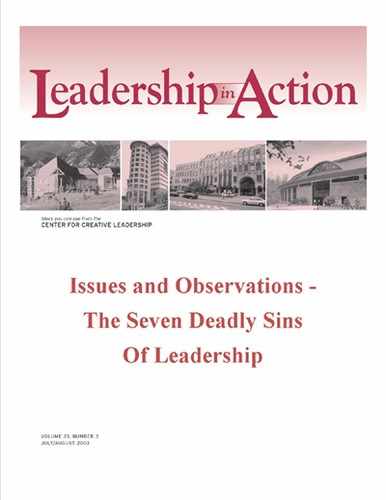A MORAL COMPASS
The seven deadly sins are just as relevant today as they were to our ancestors. But can leaders do anything to change their attitudes and behaviors to counter and transcend the malignant forces created by the deadly sins? The answer is yes.
In a 1999 article in Leader to Leader, Warren Bennis writes: “For executive leaders, character is framed by drive, competence, and integrity. Most senior executives have the drive and competence necessary to lead. But too often organizations elevate people who lack the moral compass.”
Some leaders are destined to make the same mistakes over and over again. Will they ever learn? Once the deadly sins get hold of someone, they are hard to get rid of. But perhaps the saving virtues can be translated into personal operating principles to rebuild leadership at all levels.
The saving virtues present a model of moral leadership to create, develop, and sustain leadership excellence. Translated into contemporary language, these virtues are humility, love, kindness, fortitude, temperance, generosity, and reserve. Leadership research suggests that individuals who exhibit behaviors associated with the saving virtues have a high aptitude and capacity for leadership.
Identifying the saving virtues and matching them against their corresponding deadly sins can help leaders live a moral leadership model day by day and break the cycle of disillusionment with leadership. The saving virtues can form a framework that embodies the essence of true leadership. By fostering the saving virtues and changing their opinions about what constitutes moral behavior, leaders can create an atmosphere of trust and commitment. Understanding each saving virtue and the corresponding behaviors associated with effective leadership allows leaders to make appropriate choices about how they want to behave and lead.
Humility
When leaders replace pride with humility, they can share a common bond with others without contempt. This produces an atmosphere in which there is a notion of community with social responsibility and respect for all, leaders take the time to listen to their own consciences and the voices of their followers, and there is a healthy self-acceptance.
Behaviors and characteristics that leaders demonstrate when humility replaces pride include listening without judgment, bringing out the best in people, building healthy relationships, learning through others, and practicing self-awareness.
Love
When love replaces envy, leaders can celebrate the good fortune of others with generosity and full acceptance. An atmosphere is created in which leaders can accept people's differences, forgive failure (which allows for learning from experience), and honor talent and hard work.
Behaviors and characteristics that leaders demonstrate when love replaces envy include being open to influence and participative management, valuing diversity, being straightforward, and maintaining composure.
Kindness
When kindness replaces anger, leaders can become more respectful and forgiving of others. An environment is created in which boundaries and distinctions are accepted, leaders are more peaceful and patient, and support and collaboration are enhanced.
Behaviors and characteristics that leaders demonstrate when kindness replaces anger include managing conflict skillfully, exhibiting compassion and sensitivity, putting people at ease, acting with integrity, and coping with pressure.
Fortitude
When fortitude replaces sloth, leaders and their followers can more resolutely face crises, hardships, and dangers. An atmosphere is created in which people feel more connected, have a greater sense of purpose, and are more inclined toward risk taking and innovation.
Behaviors and characteristics that leaders demonstrate when fortitude replaces sloth include adaptability, flexibility, risk taking, and courage.
The saving virtues can form a framework that embodies the essence of true leadership.
Temperance
When temperance replaces gluttony, leaders become less self-centered and are better able to balance their work and personal lives. An environment is created in which moderation is valued, different points of view are respected, leaders are more inclined to reward others, and people are free to express themselves.
Behaviors and characteristics that leaders demonstrate when temperance replaces gluttony include self-motivation, resilience in the face of disequilibrium and adversity, and the capacity to make trade-offs.
Generosity
When generosity replaces greed, leaders pay more attention to others, with an open mind and heart. An atmosphere is created in which leaders develop healthy, genuine relationships with others based on mutual respect; trust and commitment are valued; and people are more friendly, supportive, and encouraging.
Behaviors and characteristics that leaders demonstrate when generosity replaces greed include enhanced abilities to learn from others and from mistakes, to seek and use feedback, to motivate others, and to delegate effectively.
Reserve
When reserve replaces lust, leaders become more confident and are more inclined to fully appreciate the workplace contributions of others—both men and women. An environment is created in which the tension from ambiguous working relationships is relieved, diversity and cultural differences are valued, and people relate to one another in a responsible and respectful manner.
Behaviors and characteristics that leaders demonstrate when reserve replaces lust include being more ethically grounded and being better able to influence others.
